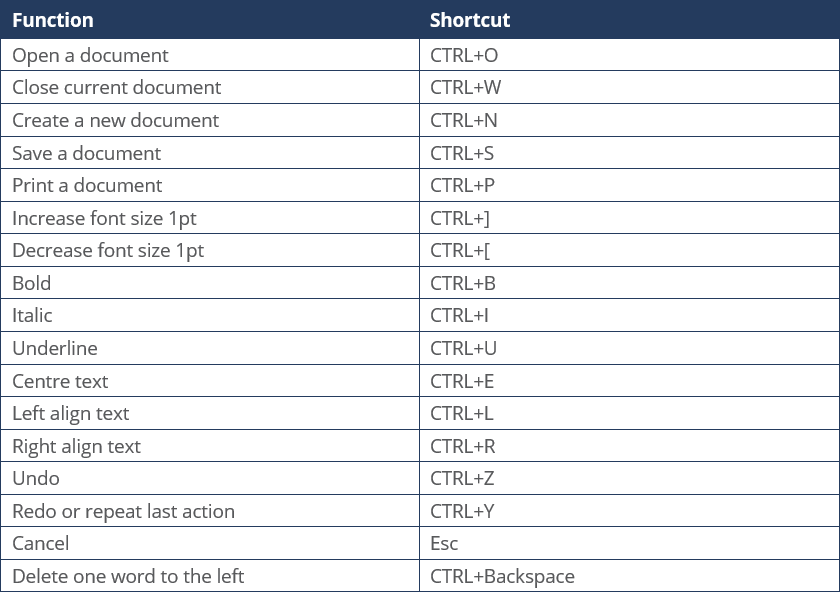

#MICROSOFT WORD COMMANDS LIST WINDOWS#
Elements (text, images, etc) can be added to the clipboard using the Copy command (see above), this clipboard will also show any elements stored in the Windows Clipboard. Office Clipboard: This command will display the current contents of the office clipboard, allowing you to click on the stored elements to insert (paste) them directly into the current document. It can then be inserted (pasted) into a document using the Paste command (see below), which will appear in the edit menu once you have copied something to the office clipboard. For example if you highlight (select) some text and then click on cut, it will be deleted.Ĭopy: The Copy command will copy the curently selected element (text, image, etc) into the office clipboard. In our example clicking on the Repeat Typing will repeatedly insert the same piece of text into the document.Ĭut: This command will cut (delete) the currently selected element. Repeat (last task): This repeats your last action.

This is a handy command, especially if you delete something by accident. Undo (last task): This option allows you to undo the last thing you did in your Microsoft Word document, in our example (fig 1.1) you can see our last action was to type some text.

Including author information, statistics, type, location and filesize of the document. Properties: This will open the Microsoft Word document properties dialogue box, allowing you to view/edit various properties of the document. Send To: Hovering your mouse over this option will allow you to send your document via email, or export it to Microsoft Powerpoint (if installed). Print: Opens the print dialogue box allowing you to print the current document. Print Preview: Selecting this option opens the print preview window, allowing you to preview how your document will look when printed. It allows you to set the properties (dimensions, margins, etc) of the current document and change the default for new Microsoft Word documents. Page Setup: This opens the page setup options dialogue box. When you click, Microsoft Word will open the document in your default web browser. Web Page Preview: Clicking on this option will display your current document as it would look in a web browser. For example, if you changed your letterhead and wanted to keep the older version too. Versions: This feature allows you to save different versions of the current Microsoft Word document. Search: Clicking Search will open the basic search window, allowing you to search your computer for documents containing certain text. Save As Web Page: This option will save the current document with the HTM(L) extension, allowing it to be viewed by a web browser. When you click on Save As you will be able to choose the new filename and location for your document. This is very useful, imagine you open your letterhead template and write a letter that you want to save, if you just saved it (using the option above), it would replace your letterhead template. Save As: This allows you to save the document as a different file. Save: Saves the current document, replacing the existing file (if previously saved). Microsoft Word may prompt you to save the file, if you have made changes to the document since the last save.

Open: This opens an existing Microsoft Word document, it will open a file explorer window allowing you to navigate to the file you want to open.Ĭlose: This will close the current word document. The page setup of the new document, ie, the size, margins, etc, will depend on your page settings. New: This creates a new Microsoft Word document.


 0 kommentar(er)
0 kommentar(er)
